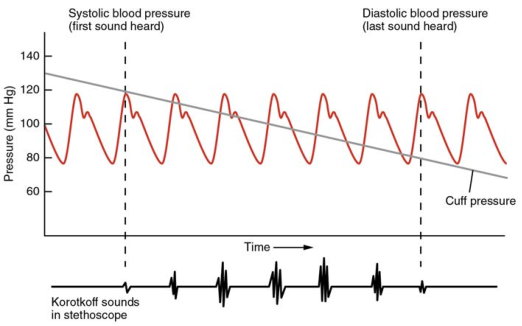Homeostasis is the state of equilibrium that is necessary for the functioning of a living organism. Several systems within the human body, such as the endocrine and the cardiovascular system, maintain it. These systems’ function is critical to survival, as disruptions to their ability to maintain this equilibrium can cause significant and life-threatening conditions. Blood pressure is an indicator of some of these conditions.
Endocrine glands serve as the body’s communication system, responding to the body’s internal and external conditions by releasing hormones. Hormones then travel through the bloodstream and bind with receptors for that hormone in cells that contain them, or target cells, and alter their activity (Belts et al., 2017). This sequence of events allows the body to regulate its physiological processes, maintaining homeostasis.
For instance, the pancreas, in addition to its function in digestion, secretes glucagon and insulin, hormones that are critical to the metabolism of glucose (Belts et al., 2017). If this function is disrupted at any point, the body cannot maintain homeostasis as glucose is crucial for energy exchange (Belts et al., 2017). One condition that can cause this disruption is diabetes mellitus, when insulin cannot be produced (type 1) or cells develop a resistance to insulin (type 2) (Belts et al., 2017; DeFronzo et al., 2015). Diabetes mellitus is a significant condition that requires near-constant observation and management.
The heart is critical for maintaining homeostasis by regulating the flow of blood to other organs. This supplies them with the nutrients necessary for their function while also removing waste products (Belts et al., 2017). Blood flow is also critical for maintaining healthy body temperature, delivering more blood to the usually colder extremities to cool down or restricting blood flow to preserve core temperature (Belts et al., 2017).
Furthermore, as different organs become more or less active in response to the body’s activity, such as eating or physical exercise, blood needs to be redirected to the tissues that require it (Belts et al., 2017). If blood flow is restricted and tissues are unable to receive nutrients or eliminate waste materials, which can happen due to trauma, exposure to cold, or infection, they can receive permanent damage and gangrene (Belts et al., 2017). Therefore, ensuring that sufficient blood flow is maintained is crucial, and any condition interfering with it needs to be resolved as quickly as possible.
Blood pressure is the force exerted on blood vessels’ walls by the blood flowing through them. Arterial blood pressure is the kind most commonly measured in clinical settings.

Figure 1 illustrates how arterial blood pressure is measured with a sphygmomanometer. The illustration shows a normal pressure of 140 mm Hg systolic and 80 mm Hg asystolic. These measurements can change based on several blood-related factors. For example, cardiac output, the amount of blood flowing from the heart, has a direct effect on both the systolic and asystolic blood pressure (Belts et al., 2017). Graphically, an increase in cardiac output would mean that the overall graph is raised, with both its peaks and low points coinciding with a higher cuff pressure; conversely, a decrease would lower the graph.
Conclusion
Homeostasis is a state that is critical to the human body’s survival. Multiple systems contribute to its maintenance by responding to change in external or internal conditions. The endocrine and cardiovascular systems serve critical functions in supplying and regulating other organs’ function, and, therefore, are essential to maintaining homeostasis. If their function is disrupted or prevented, various dangerous and life-threatening conditions can develop that need to be treated.
References
Betts, J. G., DeSaix, P., Johnson, E., Korol, O., Kruse, D. H., Poe, B., … Wise, J. (2017). Anatomy and physiology. Houston, TX: OpenStax College.
DeFronzo, R. A., Ferrannini, E., Groop, L., Henry, R. R., Herman, W. H., Holst, J. J., … Weiss, R. (2015). Type 2 diabetes mellitus. Nature Reviews Disease Primers, 1(1). Web.